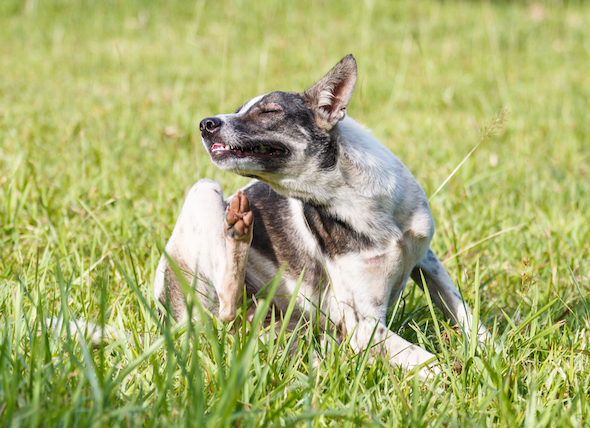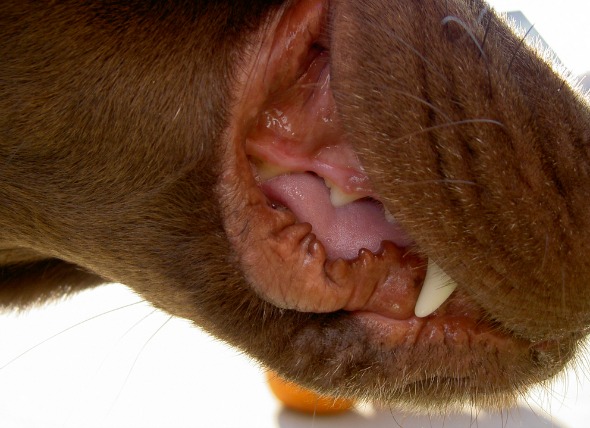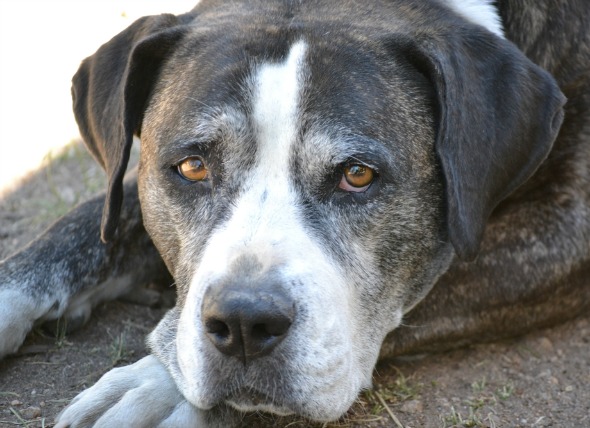

When a dog's skin is cut or wounded, there is an increased risk of infection. Pyoderma refers to a bacterial infection of the skin that is very common in dogs. Lesions and pustules (inflamed pus-filled swelling) on the skin, and in some cases partial hair loss, often characterize the infection. Treatment is typically given on an outpatient basis and prognosis is good.
The condition described in this medical article can affect both dogs and cats. If you would like to learn how pyoderma affects cats, please visit this page in the PetMD health library.
The infection can occur on the superficial layers of the dog's skin, or if there is a deep laceration, in the inner folds of the skin. The latter infection is referred to as deep pyoderma.
While this bacterial infection can occur in any breed, there are a few types that are predisposed to developing pyoderma, including:
Dogs have a higher risk of developing an infection when they have a fungal infection or an endocrine disease such as hyperthyroidism, or have allergies to fleas, food ingredients, or parasites such as Demodex.
In most cases, the condition will be examined on a superficial basis and treated accordingly. In the event that the pyoderma appears to be deeper in the dog's skin, skin scrapings, skin biopsies, and an examination of bacterial cells (smear) may be performed to see if the condition is a result of a more serious underlying medical condition.
The infection typically responds favorably to medical treatment. Treatment is generally done on an outpatient basis and will involve external (topical) medications, as well as antibiotics for the infection.
An antibiotic treatment regimen is generally prescribed for more than a month to ensure that the entire infection is eliminated from the dog's system, which should also reduce the incidence of recurrence.
There is the possible complication of bacteria spreading into the blood, so it is important to observe the dog's recovery time and to notify the veterinarian in the event that other symptoms develop or the condition worsens.
Routine bathing of the animal’s wounds in benzoyl peroxide or other medicated shampoos can reduce the incidence of infection initially, and will help after to prevent recurrence.
 Swollen Gums in Dogs
Gingivitis in Dogs
Gingivitis is a reversible inf
Swollen Gums in Dogs
Gingivitis in Dogs
Gingivitis is a reversible inf
 Fungal Infection (Pneumocystosis) of the Lung in Dogs
Pneumocystosis in Dogs
Pneumocystosis is a fungal
Fungal Infection (Pneumocystosis) of the Lung in Dogs
Pneumocystosis in Dogs
Pneumocystosis is a fungal
 Nose and Sinus cancer (Squamous Cell Carcinoma) in Dogs
Nasal Squamous Cell Carcinoma in Dogs
The respira
Nose and Sinus cancer (Squamous Cell Carcinoma) in Dogs
Nasal Squamous Cell Carcinoma in Dogs
The respira
 Enlarged Liver in Dogs
Hepatomegaly in Dogs
The term hepatomegaly is use
Enlarged Liver in Dogs
Hepatomegaly in Dogs
The term hepatomegaly is use
 Flea Control and Flea Bite Allergies in Dogs
Flea bite hypersensitivity and flea allergic dermatitis
Flea Control and Flea Bite Allergies in Dogs
Flea bite hypersensitivity and flea allergic dermatitis
Copyright © 2005-2016 Pet Information All Rights Reserved
Contact us: www162date@outlook.com